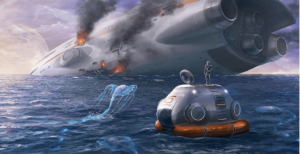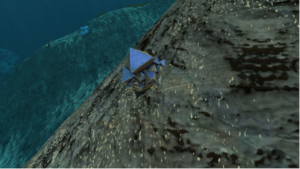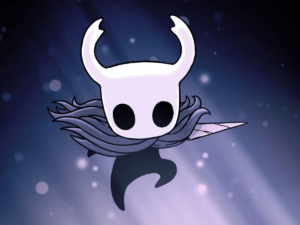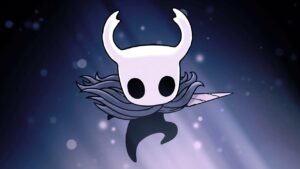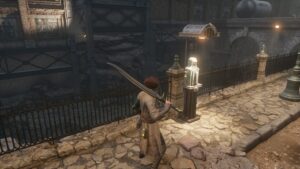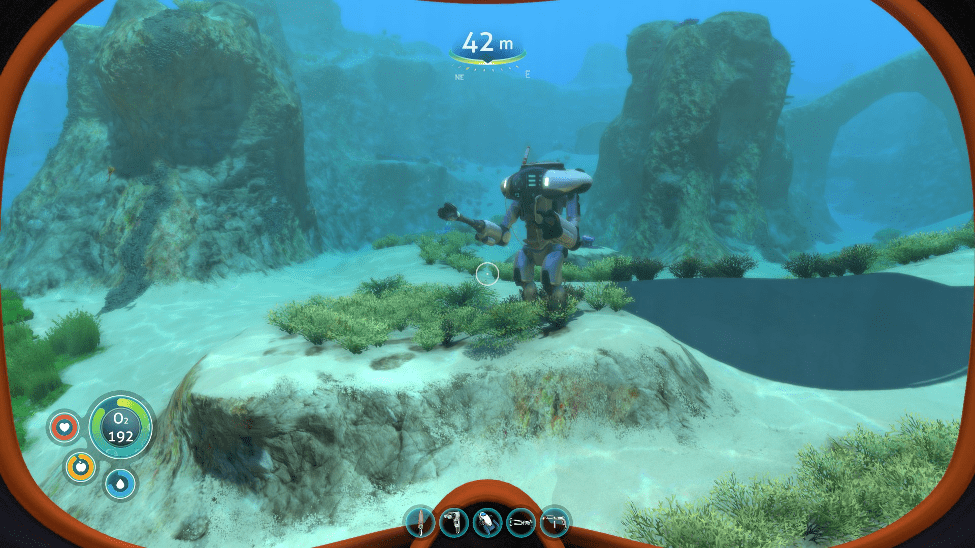
- Last Updated on
Subnautica offers a few methods of navigating the depths of Planet 4546B. The portable Seaglide helps give you that early speed boost, the Seamoth paves the way to your first prolonged dives thanks to the light and oxygen source, and the Cyclops acts as a mobile base. As useful as these vehicles are, there are some situations where they just don’t quite cut it.
Enter the Prawn Suit. Aptly described in-game as an “epic mech suit”, the Prawn Suit will finally put you on an even keel with most of Subnautica’s beasts, once you have the appropriate upgrades. Before long, you’ll be grappling around Reapers and Sea Dragons like an underwater Spider-Mech, tearing into them with arm-drills. It also makes navigating narrow areas easier too, which is nice. Praise-singing completed, it’s time to find out exactly how you build the Prawn Suit in Subnautica.
Subnautica Prawn Suit – Where to find the fragments
Scanning the fragments for the Prawn Suit is a much easier task than for the Cyclops, despite it requiring twenty fragments. You can find Prawn Suit fragments, usually arms, dotted about wrecks all over the world, with each counting as one fragment. However, there are not enough fragments to unlock the Prawn Suit like this. Instead, you’ll have to make your way to the Aurora’s Vehicle Bay. Inside are five damaged Prawn Suits, each counting as a full quarter toward unlocking the blueprint. To get the four you need, you’ll require a laser cutter, repair tool, and a propulsion cannon, alongside doing a bit of exploration. Once you’ve got your fragments, it’s time to get building
💥 Don't Miss These Latest Deals 💥

- 27 inch QHD (2560*1440) display with the DCI-P3 90% wide color gamut brings what you’re watching to life in over 16.7M colors

- Nvidia ampere streaming multiprocessors
- 2nd generation rt cores:
- 3rd generation tensor cores
Building the Prawn Suit
While getting the blueprint is an easy task, building the Prawn Suit is far more complicated. If you’ve already built the Cyclops, then you’ll already know how to get half of what’s needed for the Prawn Suit. The other materials, however, are fairly late game finds. To build the Prawn Suit, you’ll need two pieces of lead, one piece of enameled glass, two Plasteel Ingots, two diamonds, and two pieces of Aerogel. I’ll be going over how to obtain each material, so if this is old news to you, feel free to skip around.
Enameled glass
Finding lead should be second nature to you by now, so I’ll start with enameled glass. On the off chance it isn’t, look for sandstone outcrops, often found in the Kelp Forest and Grassy Plateau, for a chance to get it. Back to the enameled glass, you’ll need a piece of glass and Stalker teeth. Glass can be made from quartz, while Stalker teeth can be easily obtained by leaving out cameras. Once Stalkers bite them, you’ll get your teeth in short order. Combine the two for enameled glass.
Plasteel ingots
Plasteel ingots are the last materials shared with the Cyclops. You’ll need two for the Prawn Suit, costing you two titanium ingots and four pieces of lithium. The titanium ingots are easy enough to get, but lithium might be slightly more complicated. The easiest place to find them is in the Mountains on the seabed, though they can be harvested from shale outcrops. If you plan on scavenging around the Mountains, keep an eye out.
Diamond
Moving onto the unique materials now, next up on your shopping list is diamond. They are somewhat rare, but they can be harvested from shale outcrops, meaning you can get an infinite source with a bit of effort. If you didn’t know, Sea Treaders kick up shale outcrops as they walk, providing an infinite source of gold, lithium, and diamond. If the Sea Treader’s Path is an inconvenience, diamonds can be obtained from the seabed. Pretty much anywhere deep will do, though I’ve found success in the Grand Reef.
Aerogel
The last material you need for the Prawn Suit is Aerogel. Aerogel requires a couple of late-game materials, namely rubies and gel sacks, which can be a trial to acquire. Gel sacks will take you roughly 500 meters deep, depending on where you plan to find them. The Blood Kelp Zone is a good place to go, as it is relatively safe compared to other areas. Pack yourself some weapons and combat supplies, then take your Seamoth down to the trench. You’ll find your gel sacks in the depths of the trench. Once acquired, plant them in a grow bed for an infinite source.
Now for the rubies. While searching for gel sacks in the Blood Kelp Zone, you’ll likely stumble across a few rubies as you go. They are rare, however. For a good supply, you’re better off looking deeper, in hotter areas. If you search in the vicinity of the Lost River or the Inactive Lava Zone, you’ll find plenty. As luck would have it, there is a path to the Lost River in the Blood Kelp Zone, and a path into the Lava Zone through the Lost River. A pretty good expedition path for the materials you need.
Check Out How To Craft Aerogel
Deploying the Prawn Suit
With all the materials in hand, it’s time to build the sea-mech. Head over to your Mobile Vehicle Bay and start fabricating, though you’d best move it to somewhere shallow. The Prawn Suit does have a jetpack, but its overall mobility is limited to begin with. The last thing you’d want is to watch all your hard work sink into the deep.
Your first expedition in the Prawn Suit
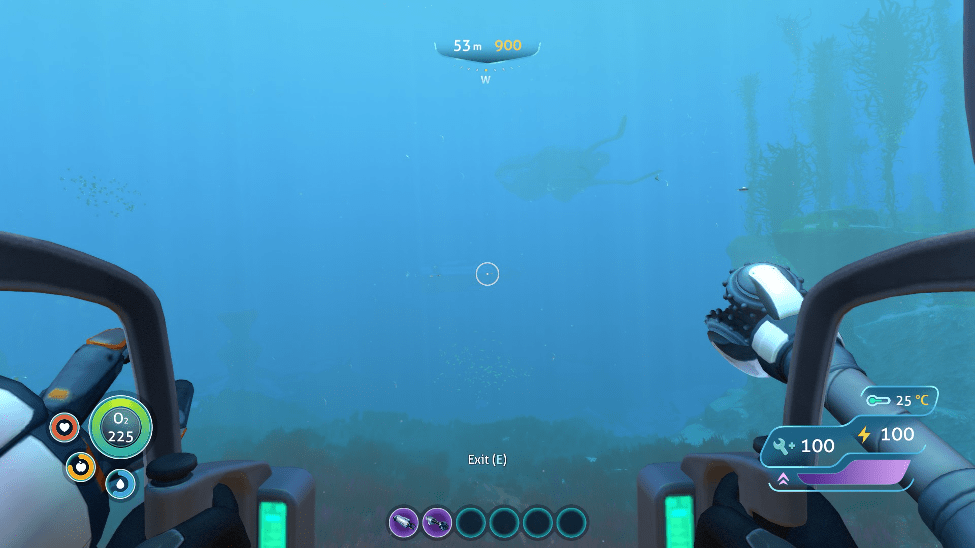
While your Prawn Suit is fabricating, your PDA will caution you against overconfidence upon entering the Suit. It’s a good idea to heed this advice, as charging in headfirst against the first Leviathan you see is not likely to go well. For a better first-time experience, there are a couple of things to keep in mind.
First off, you are pretty vulnerable without upgrades. This is largely due to poor mobility, making it much harder to dodge incoming threats. To begin with, it would be best to keep away from dangers or at least have a means of defense outside your Suit. The Stasis Rifle and Thermoblade are good calls.
The second is in relation to the Suit’s poor starting mobility. Though it might not fit your intended use, stowing your Prawn Suit in the vehicle bay of your Cyclops is perfect for shipping it around to more fitting locations. This way, you are better able to evade dangers should any come calling.
Upgrading your Prawn Suit

The Prawn Suit is a hefty piece of equipment and your first main defense against the terrors of the deep. But, to mount a truly effective defense (or offense if you’re so inclined), you’ll first need to equip your Suit with some upgrades. For the Prawn Suit, this comes in two forms, standard upgrade modules, and arms. Bear in mind though, these upgrades can be quite resource-intensive, with the majority requiring late-game materials.
Prawn Suit depth modules
Just like the other vehicles, the Prawn Suit can be equipped with depth modules, increasing the Suit’s crush depth from 900 meters to 1700 meters. For these modules, there’s no blueprint hunting, as you can fabricate them at the Vehicle Upgrade Console. The first takes materials, while the second uses its predecessor as a base.
Prawn Suit storage module
The Prawn Suit shares this upgrade with the Seamoth, so it’s a cheap one to get. You can either grab one from the Aurora’s Prawn Bay, or fabricate one for some easily obtained materials. With it equipped, your Prawn Suit will gain an additional six storage per module.
Prawn Suit hull reinforcement module
This is a weird one. It’s another module shared with the Seamoth, perfectly compatible with the Prawn Suit, but it doesn’t help one bit. As you no doubt can tell, your sturdy mech doesn’t move nearly fast enough to suffer collision damage, which the module mitigates, rendering it useless. Don’t make the mistake I did and assume it increases your defense against sea monsters, because that’s a surefire way to replace metal encasement with a fleshy one.
Prawn Suit engine efficiency module
This module is the third one shared with the Seamoth, though thankfully it works this time. The module’s effect stacks, decreasing power usage by 15% per module. You can fabricate it at the Vehicle Upgrade Console fairly cheaply.
Prawn Suit thermal reactor module
The thermal reactor marks the point of deviation from the Seamoth. It’s meant for lower depths, so having a solar panel isn’t the most useful. When equipped, this module will allow the Prawn Suit to charge its batteries when in temperatures of at least 30 degrees, with higher temperatures leading to quicker charges. You can fabricate it at the Vehicle Upgrade Console.
Prawn Suit jump jet upgrade
This upgrade is the last that directly affects the overall Suit, with the rest being arm upgrades. It significantly boosts the effectiveness of the jump jet, allowing you to jump more than twice the original height, with a much quicker rate of acceleration. This can be good for evasion, or hot-footing it out of a sticky situation.
Prawn Suit claw arm
The claw arm is the default arm of the Prawn Suit, enabling you to make general interactions. You can break rocks and collect resources with this arm, while also using it to deal a fair amount of damage to predators. Other than that, nothing too special.
Prawn Suit drill arm
The drill arm is the first unique arm for the Prawn Suit. If you can believe it, it allows for the mining of large resource outcrops, with the resources being deposited into the storage bay. It doubles as a damage dealer, with a higher dps than the claw arm, though lower damage per hit. You’ll need to scan two fragments for it, found at wrecks in the Blood Kelp Trench, Dunes, Grand Reef, and Underwater Islands.
Prawn Suit grappling arm

The grappling arm is easily the most useful upgrade in terms of mobility. Either through slingshotting yourself across the deep blue or hitching a ride on now accommodating Leviathans, you’ll be able to get around the world much quicker. This is doubly true if you equip the jump jet upgrade, alternating between the two to travel at a breakneck pace. The two necessary fragments can be found at wrecks in the Blood Kelp Trench, Dunes, Grand Reef, the Mountains, and Underwater Islands.
Prawn Suit propulsion cannon
The propulsion cannon arm acts as an upgrade to the handheld version, allowing you to lift much heavier objects. You can also pick up some flora and fauna, launching them around at your whim. You can find the two required fragments at wrecks in the Mountains, Sea Treader’s Path, and Underwater Islands.
Prawn Suit torpedo arm
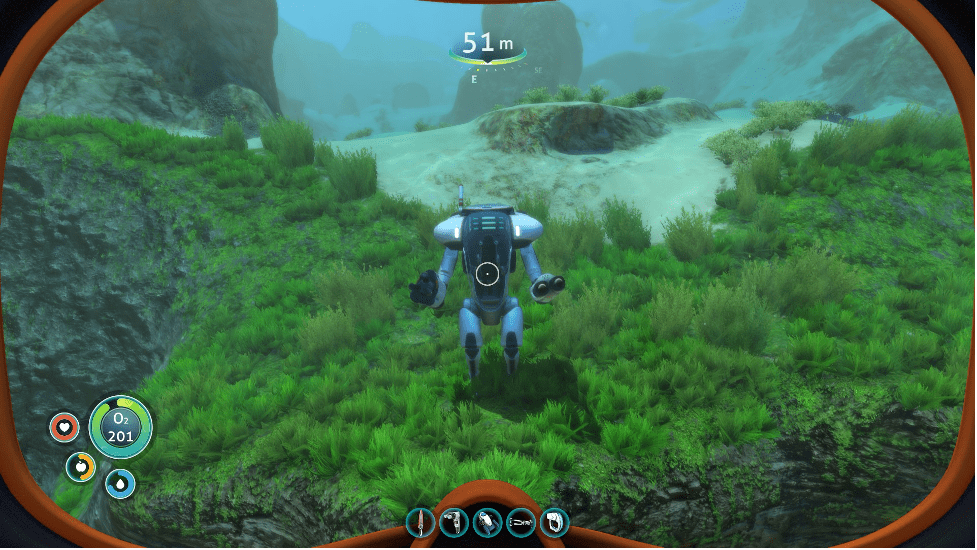
The torpedo arm is the final arm and upgrade available to the Prawn Suit. As it sounds, it adds a torpedo launching platform onto the Prawn Suit, with two torpedo tubes per arm. The torpedoes can be useful when fighting Leviathans, particularly the Sea Dragon, though making enough torpedoes can be expensive. To kill a Leviathan, you’re going to need at least 30 gas torpedoes judging by my experience. A shot from the Stasis Rifle and slices from the Thermoblade get the job done more efficiently in my book.
So concludes our deep dive into the Subnautica Prawn Suit. Building it will set you up well for the later areas of the game, as they are deep and inhospitable. Having the safety of the Prawn Suit will make navigating these hazardous areas much more straightforward. With upgrades, this is even more true. The setup I recommend is a drill arm and grapple, for navigation, resource gathering, and defense. Upgrades should include the jump jet, depth, and thermal if you intend to go deep and without a Cyclops. The final slot is up to you. If you haven’t built the Cyclops yet, check out our guide on the submersible companion!



